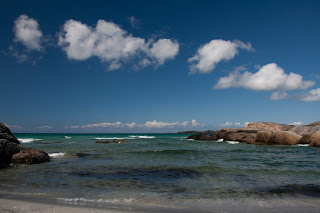Susan Sontag's classic "On photography" (first published 1978) is a collection of seven essays she wrote on the moral and aesthetic problems surrounding photography as an art form. "A progress of essays about the meaning and career of photographs," Sontag calls it her self in the foreword in my edition.
The second book is Vilém Flusser's "Towards a philosophy of photography". The publisher states that "Flusser shows that the change from a text-based to an image-based culture (from the linearity of history to the two-dimensionality of magic) and the change from an industrial to a post-industrial society (from work to play) go hand in hand, and how this mutation can be seen with particular clarity in the case of photography."
The third book is Ian Jeffrey's "Photography - A concise history" - a work that wants to go deeper than describing the history of the technical developments of photography, rather explore the essence of photography and it's relation to other art forms.
Maybe you are sighing now, shaking your head a little and thinking that this blogger is trying too hard to show off as an intellectual. What is the point of all this philosophy crap, really? What is there to learn in such texts?
This is where the backdrop come into consideration. Have you ever taken a photo where, after development you discover that the backdrop ruined your motive entirely?
- No, never been so unlucky? Okey: An example from my own collection then:
This tranquil and serene photo of a pretty resting dove was totally ruined by a cheeky, scratching sparrow that decided to be the ugliest lens-bug ever, totally ruining my motive. The culprit can be very very happy that I didn't notice this intrusion of the lens before I came home, or...
Another approach is of course to look on the outcome of this photo with a humorous smile and let it stand as a fitting photography of a lens-bug more than an image of a dull dove.
To read about philosophical theory on photography is to create a backdrop in your approach to photography: This backdrop gives the motive, to become a good photographer, focus in a indirect but important way. Sure if you sit down and think very hard about photography, the world around yourself, life, the universe and everything, you may come up with a lot of the things books like these will tell you. But reading good literature spares you a lot of time and effort, surely.
Susan Sontag practically starts her book of by stating that
"In teaching us a new visual code, photographs alter and enlarge our notions of what is worth looking at and what we have a right to observe."
I was in Rome in April 2008. Needless to say, I took lots of photographs. There is one photograph I regret not taking, but I was stopped by simply having left my camera with friends as I went for an exchange machine in the end of a very busy town square, next to horse cabs and street artists and (of course) tourists. A gypsy was standing next to the horse's watering station, washing himself quite thoroughly. A bit too thoroughly as he proceeded. The seance came to it's crescendo when he finished washing his private parts under his trousers and, without rinsing his hands, swiped them over his face and hair. A loud and shock filled sigh went over the audience. A few seconds passed, and then the merchants, concerned that this demonstration of poor sanitarian judgement might disgust the tourist clientele, chased him off with hash words and strong hands, "Go, go, never come back, ugly gypsy good-for-nottin'," they might have said.
 |
| One of the photos I did take while in Rome |
The scene is vivid in my mind, and as I said I regret not having a photo of the happening, because it was one of those strong moments when you go abroad and want to experience something "different" than what you see in your everyday life. Maybe the incident felt so strong because it was a very strong confirmation of prejudices. I'm not sure. Another one of those things I have to think about.















